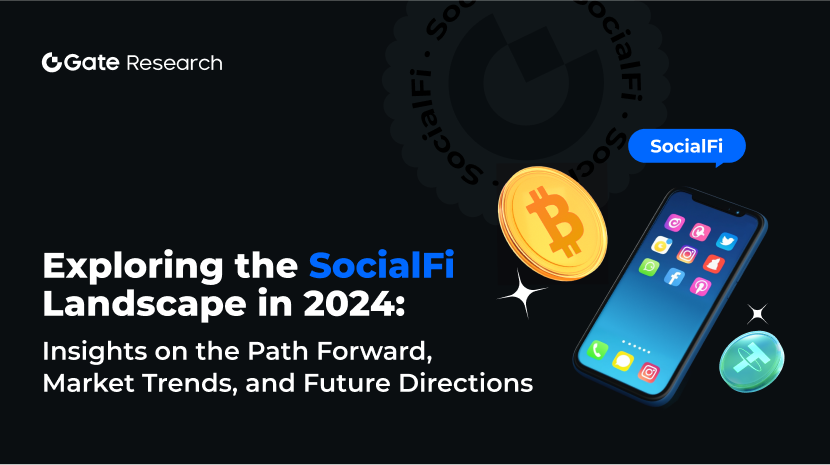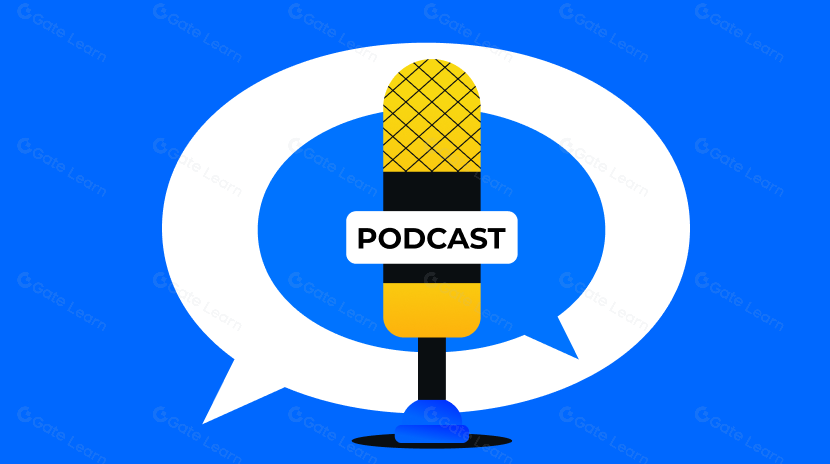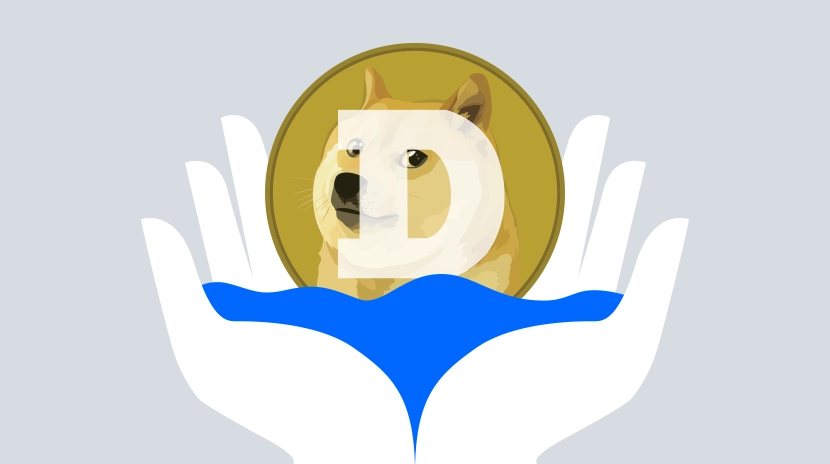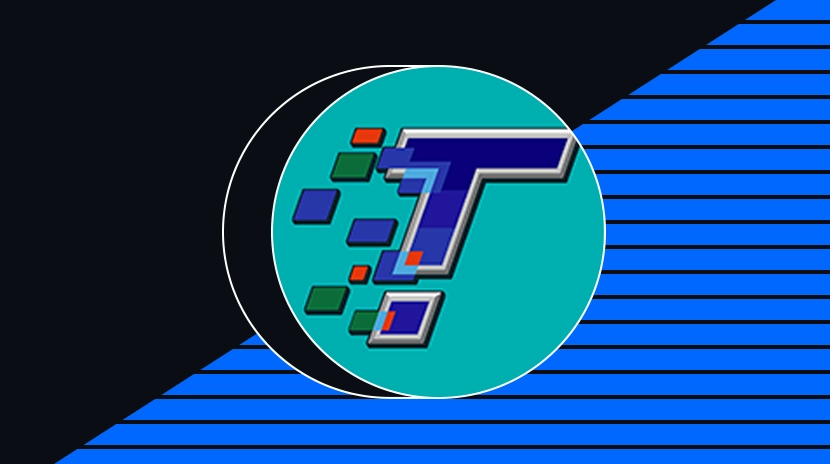加密社区评量框架
转发原文标题《社区”到底是什么?第 1 部分(用 BARD 进行分解)》
谁需要阅读本文?
- 创始人说“社区就是一切”
- 在每一次宣传中都听到它的风投
- 散户认为 Discord 活动是坚定信念的标志
现在让我们来回答这个问题:
- 您所在社区的共同信念是什么(如果有)?
- 谁贡献,多久贡献,贡献内容是什么?
- 当最近价格下降 70% 时,Discord 上的对话是怎么样的?
- 他们是一个相互链接的网络,还是只是一群人?
如果您无法在 30 秒内回答这些问题,那么您实际上并不了解您的社区、不了解你的受众。而这两者并不是一回事。
感谢 poopmandefi、0xjunkim、devrelius、0xBrans 和 100y_eth 对本文的反馈。
要点
- “社区”是加密货币领域最常被误用的词。 BARD 框架将其分为四个真实信号:信念 (Belief)、行动 (Action)、弹性 (Resiliance) 和密度 (Density),以区分实质内容和炒作。
- 信念是一个社区的哲学和情感核心。只有当有一套共同的价值观和叙事时,一群持有者才会演变成一场运动。
- 行动是最强烈的信号。真正的社区不会只是袖手旁观,而是会建设基础设施。社区的真正价值是其所有贡献的总和:代码、梗图、内容、工具等等。
- 在压力下表现出韧性。真正的社区以坚定的信念而不是沉默来度过熊市和挫折。如果它们在市场下跌 70% 时消失,那么它们就不是真的社区。
- 密度决定了社区的生存力和可持续性。强大的社区形成坚实的网络(线下聚会、群聊、子DAO),而且不容易崩溃。
1. 过度使用的加密货币流行语
如果你看一下加密 Twitter (CT)和大多数 web3 演示文稿,你会发现有一句话总是会出现。”我们有一个很棒的社区!”从准备进行代币预售的项目,到推广 NFT 铸造的艺术收藏,再到拥有漂亮网站的 L1,它们都声称拥有一个社区。但仔细观察就会发现,他们所说的社区大多只是 Telegram 或 Discord 上的短期、投机性用户群。
这样一来,”社区”一词在当今的加密行业中就变成了毫无意义的修辞,就像”去中心化”或”创新”一样。因此,在这个任何东西都可以称为社区的时代,”社区”这个词实际上已经变得毫无意义。所以我们现在需要的是一个可以从结构角度定义、诊断和分析社区的工具。为此,本报告提出了”BARD框架”。
输入巴德:信念、行动、韧性、密度。当一个项目说它”有一个社区”时,我们希望提供一个结构性参考点,以便我们可以验证情况确实如此。这个框架的目的是以更结构化的方式解构社区这个抽象概念,并将其转化为可以在一定程度上进行定性和定量评估的分析单位。这可以作为各种利益相关者的分析工具,包括希望建立忠实用户群的创始人、探索下一个叙事的数字投资者以及评估项目的风险投资家。

然而,这个框架更接近一种思维模型,将”社区”这个模糊的概念转化为一种结构化的思考方式,而不是一个数值量化模型。换句话说,BARD的目的是提供方向而不是精确性。
2.信仰(社群的核心)
信仰是社区的教义,是共同的信仰或精神。伟大的社区就像有使命的运动一样。
每个真正的加密社区都始于信念,这种信念将其成员团结在比价格更重要的事物上。在 Web3 中,信仰常常与宗教接壤。这并非夸张,而是事实。加密货币确实依赖于叙事和信仰。加密社区常常类似于宗教运动,这并非巧合:比特币、以太坊、Solana 都有自己的狂热支持者,几乎每个主要项目都有一个为其信徒的绰号(Beras、Initiates、Ninjas;这样的例子不胜枚举)。正如一篇文章所言,“最有力的敘事是宗教,它將道德、故事和實踐結合起來,創造出自我維持的運動。 ”
比特币开创了先例。 “去中心化是好的,银行是坏的。个人主权是好的,国家控制是坏的。隐私是好的,监视是坏的。” 这些原则对比特币极端主义者来说就像是圣经,体现在超越简单资产持有的哲学实践中。资产的自我托管、反银行态度、激光眼头像等都是这种信念转变为生活方式的结果。正是这种共同的信念,让比特币社区在经历 Mt.Gox 事件和无数其他批评之后依然能够团结在一起。

以太坊也有自己的信仰结构:开放基础设施、去中心化一切、“世界计算机”。当有一个核心信念时,单纯的用户群就会转变为一个事业。这是一群碰巧持有相同代币的人与持有相同代币的人之间的区别 一个运动。
也就是说,当核心理想开始出现分歧时,信念就会减弱。不是在用户中,而是在领导者中。以太坊现在正面临着这种紧张局势。关于升级优先级的内部分歧、以太坊基金会(EF)内部的领导权争议以及最近围绕利益冲突的争议,都暴露了曾经有凝聚力的叙述中的裂痕。尽管以太坊仍然具有强大的文化引力,但缺乏统一的方向,以及关键人物正在拉向不同意识形态方向的看法,导致人们对使命漂移的担忧日益增加。当信仰在顶层分裂时,它不可避免地会扩散到整个社区。

这个案例凸显了一个更基本的事实:信仰是一把双刃剑。如果只有盲目的涨价信念,而没有明确的使命,那么这个社区其实更接近邪教。事实上,一位批评家将加密货币行业称为”信仰驱动的经济”,并指出它看起来像是一种由没有实质内容的集体信仰所维持的幻象。只要每个人都相信,这个体系就会维持下去,但是一旦这种信念崩塌,建立在其上的一切都会崩塌。
真正的社区的信念必须通过现实世界的成就来证明并不断更新。只有当产品推出、里程碑达成、项目宣称的价值观与实际行动一致时,社区才有维持信仰的基础。信任不能像空投一样分发。信任是随着时间的推移和不断的实践而建立起来的。
如何衡量信念: 成员能否清楚地解释项目的使命或价值观,而不需要人云亦云的营销?他们是否会自发地创造模因、口号或仪式?如果没有共同的语言或神话,就没有人能回答“你为什么在这里?”不参考价格……这不是信念,而是退出流动性。
信仰是情感的护城河。 俗话说:如果你不坚持某事,你就会为任何事而堕落。 毫无意义的社区很快就会崩溃。
3. 行动(从代币持有者到贡献者)
行动是真正的社区与被动受众的区别。它以贡献和参与来衡量。强大的社区需要很多人的帮助。他们发货、创造内容、互相帮助,所有这些都是出于激情而不是报酬。
信念点燃火焰,行动维持火焰。真正的社区不只是相信, 构建。在以去中心化和开源为核心的加密货币领域,最好的社区都是行动主义:不是根据他们拥有什么来判断,而是根据他们做了什么来判断。

很多项目都有 100,000 个持有者,但实际贡献者可能只有 100 个。这不是一个社区,这是一个监视列表。最强大的社区扭转了这一比例。他们将用户转变为建设者、教育者、模组、迷因制造者或治理参与者。想想以太坊:成千上万的开发人员、研究人员和爱好者编写 EIP、开发 dapp、运行节点、参加黑客马拉松、主持论坛、翻译文档等等。这并不是很好,因为人们都认为 ETH 很酷,它很棒是因为有很多人卷起袖子来改进它。正如一位 OG 社区建设者指出的那样, “贡献的力量非常强大。以太坊在这方面做得很好。”
许多最强大的生态系统都依靠社区构建的工具、自我组织的活动、当地大使和无尽的主动贡献而蓬勃发展。主要由草根和志愿者驱动,在当地广泛采用。他们通过他们所运送的东西而不是他们喊叫的内容来证明自己的价值。
仅仅因为 Telegram 频道有 50,000 名成员并不意味着社区的存在。更重要的是每周有 500 人回来并做出实际贡献。一个充满建设者和创造者的频道比一个贴满 “When空投?”的 Discord 要好得多。投机社区只不过是一个有华丽品牌的投机团体。一个社区的价值应该以它实际创造的价值来衡量。
为了解决这个问题,项目需要降低进入门槛并认可那些做出贡献的人。有些使用赠款和赏金系统。其他人依赖地位和社会资本。但最终,这是同样的玩法:创造贡献空间,奖励努力,并提升积极主动的社区成员。加密货币领域充满了志愿者,他们在没有被要求的情况下做有意义的事情,因为他们关心。
如何衡量行动: 寻找有形的产出和分布式的参与。谁在写提案?谁在打电话?是否有独立项目、仪表板、本地聚会或辅助工具?如果 90% 的贡献来自核心团队,那么您拥有的是受众,而不是社区。但是,当互联网上的随机数开始创造未经请求的价值、编写解释器、提供帮助、修复错误时,您就知道它还活着。
有人可能会争辩说 “贡献者是社区的货币。” 为项目投入精力(而不仅仅是金钱)的人越多,社区就越真实、越有价值。
4. 韧性(钻石手)
韧性是社区的钻石盔甲。社区的真正考验是逆境(熊市、黑客、挫折)。强大的社区不仅能够生存下来,而且还能生存下来。他们往往会变得更加坚强,因为共同度过了难关而团结在一起。
加密货币是建立在波动性之上的。市场崩溃、协议破裂、创始人消失。韧性的问题是:当事情出现问题时,社区是分散还是团结?当炒作浪潮退去时,你只剩下信徒还是只剩下一片空旷的海滩?

共同风险创造真正的纽带。尼采并不是在谈论加密货币,但当他感叹最大的回报属于那些愿意这样做的人时,他也可能是在谈论加密货币。 “危险地生活!在维苏威火山的山坡上建造你的城市!” 德根斯从字面上理解了这一点。将资金锁定在不稳定的协议中,模仿晦涩难懂的代币,在多周期崩溃中幸存下来:这些共同的经历铸就了友情。 一起度过几次 90% 的亏损,你们就拥有了一个部落。
具有韧性的社区是在痛苦中建立起来的。他们有 定罪。他们来这里不仅仅是为了空投;他们相信使命。如果一个项目的成员继续贡献,继续流行,甚至在熊市期间加倍努力,那就是力量。
如果你的“社区”在熊市中消失,那么它从一开始就不是一个社区。
此外,在危机中生存并不仅仅是渡过难关,而是要渡过难关。在强大的社区中,这些伤疤会成为荣誉徽章和教训,进一步激励成员。 FTX 后的 Solana 就是一个教科书的例子。价格暴涨95%。其最大的支持者(SBF)消失了。头条新闻称其已死。但建筑商留下来了。黑客之家仍然挤满了人。 NFT 的下跌并没有停止。 Defi 应用程序推出。模因甚至变得更好了。 Solana 的社区吸收了这一冲击,将其内在化,并围绕生存重建了叙事。 FTX 后的创伤成为传说,过滤掉了游客,并强化了核心。今天的 Solanna 信徒将其视为徽章:当一切崩溃时他们就在那里,并且留下来。这种久经考验的忠诚度不是制造出来的。是赚到的。
与 EOS 对比。尽管其破纪录的 ICO 筹集了超过 40 亿美元,但该项目未能培育一个有弹性、有信念驱动的社区。当势头放缓、治理戏剧浮出水面时,参与就枯竭了。核心贡献者渐行渐远。生态系统变薄。如果没有强大的文化根源或共同的信念可以依靠,EOS 就无法渡过经济低迷期。事后看来,牛市期间看似繁荣的社区很大程度上是肤浅的。
如何衡量弹性: 看看困难时期的行为。社区是否消失了,或者活动是否保持一致,甚至有所增加?在市场下跌期间检查 TG/discord 参与度。贡献者是留下来还是轮流离开?成员们是否分享战争故事,例如 “我们挺过了 2022 年”?这就是文化记忆,而且很重要。
信念在某种程度上是可以量化的:即使价格下跌,您也可以衡量质押率或长期持有统计数据,或者年复一年坚持不懈的核心贡献者数量。一个社区是 有弹性的 有 耐心 和 记忆。他们记得 为什么 他们在这里并在整个周期中坚持使命。
从数量上讲,您可以通过熊市周期跟踪钱包保留率、质押率或提案参与情况。定性地观察语气:有弹性的社区开玩笑说“建立市场”并不断出现。脆弱的会陷入 FUD 或保持沉默。
5. 密度(互动的深度,而不是社区的数量)
密度是群落的结缔组织。它涉及内部关系,即成员之间的紧密联系网络。最富有的社区是网络,而不是受众,他们优先考虑深度参与而不是虚荣的追随者数量。
最后一个支柱,即密度,可能是最容易被忽视的。加密货币喜欢吹嘘大数字。追随者、代币持有者、discord 成员,但如果没有联系,原始计数就没有意义。密度衡量的是这些人中有多少人实际上是相互联系的。他们合作、交谈、分享想法吗?或者他们只是偶尔围绕着核心团队?

密集的社区就像一个活跃的社交网络。连接越多成员之间的信任、协调和保留就越强。如果每个人都关注官方帐户,那么您就已经建立了受众群体。一个加密货币咨询小组将社区密度描述为 项目关注者之间的联系不仅仅是关注官方账户。如果他们在 X、discord、论坛上关注并互相交谈,那么你就建立了一个网络。
高密度=人们不仅对齐,而且纠缠在一起。他们参加群聊、聚会、DAO。他们一起模仿、一起构建、互相展示。它创造了一种归属感。当一个节点脱落时,该社区仍然成立。
为什么这很重要?因为网络效应是随着密度而增长的。在密集的社区中,信息传播得更快,协调更紧密,归属感更强。真正的联系可以培养忠诚度。您经常会看到子 DAO、区域聚会或利基渠道像数字城市中的社区一样出现。这是密度的一个健康迹象:人们形成真正的联系,而不仅仅是所有人都听一个扩音器。
如果创始人退出呢?该项目不会消亡。密集的社区不依赖单一的声音或炒作机器。他们之所以坚持,是因为成员受到彼此的约束,而不仅仅是品牌。
考虑质量而不是数量。一万名从不参与的粉丝的价值还不如一千名每天说话的粉丝。具有强大内部联系的小型 DAO 通常会胜过具有表面参与度的大型 DAO。 梅特卡夫定律提醒我们:价值与有意义的联系数量相关,而不仅仅是参与者的数量。
如何测量密度: 直接测量很困难,但有很强的信号。查看参与率(活跃聊天者与 Discord 成员总数、X 上的点赞回复率、社区成员之间的相互关注数量)。论坛、提案、模因帐户和治理中是否会出现相同的名字?这就是重叠。高密度往往表现为一种家庭氛围。当你加入这样的社区时, 你感觉到友谊之网;当您加入低密度社区时,您通常会听到回音室的声音,而领导者位于中心。一个舞台,而不是一个网络。
密度使社区能够自我强化。束缚越紧密,就越难消失。
6. 汇聚一切的力量
是时候对“社区”这一词汇背后的实际内涵提出更高的要求了。因为“社区”并不是一撮撒在项目上的魔法粉,而是靠信念(Belief)赢得、由行动(Action)构建、通过韧性(Resilience)验证、并借助密度(Density)增强的。
每一个支柱都提供了衡量社区强度的视角。它们单独来看可以揭示很多信息;而组合在一起,则构成了一个评估乃至评分网络健康程度的框架。你可以想象为一个项目在这四个维度上分别打1到10分,然后看看整体表现。例如,一个真正具有韧性的项目可能会得分如下:B=9(明确的信念体系)、A=8(活跃的贡献者)、R=10(经历考验的忠诚)、D=8(高度互联的网络),总分为35/40。而那些被过度炒作的“我们有社区!”项目呢?也许是:B=5、A=3、R=2、D=4,总分仅为14/40。
对于创始人和社区建设者而言:“BARD”就是一份蓝图。通过有意义的使命点燃信念;降低参与门槛以鼓励更多人加入;在低谷时奖励坚守者。归根结底,要将社区设计成最终能够独立于你而持续发展的生态。当一个社区开始自主地创造动力和传统,不再依赖核心团队时时插手时,那才是真正的成功。
对于投资者和观察者而言:“BARD”就是尽职调查的工具。不要只是数一数Discord群里有多少人,而要研究行为模式:谁在建设、谁在坚守、谁在连接他人。这些才是能够复利增长的关键。
而像 Kaito 这样的工具也在让这一切更容易衡量。它通过跟踪自然参与度、筛选高价值贡献者,并帮助项目正确奖励有意义的互动,正在成为将“BARD”这一理念大规模落地的关键基础设施。
在加密世界里,技术可以复制,资金会变幻莫测,真正的社区与文化可能是唯一无法“复制粘贴”的东西。所以,下次某个创始人或KOL炫耀他们“很棒的社区”时,不妨请他们用“BARD”的维度来具体说明一下——如果说不出来,那也许他们并不真的拥有那个社区。
声明:
- 本文转载自 [4pillars],原文标题《社区”到底是什么?第 1 部分(用 BARD 进行分解)》,所有版权归原作者所有 [Ponyo]。若对本次转载有异议,请联系 Gate Learn 团队,他们会及时处理。
- 免责声明:本文所表达的观点和意见仅代表作者个人观点,不构成任何投资建议。
- Gate Learn 团队将文章翻译成其他语言。除非另有说明,否则禁止复制、分发或抄袭翻译文章。
相关文章

Gate 研究院:2024 年 SocialFi 格局探索:前行之路、市场洞察与未来趋势

2025 年十大中文加密货币播客推荐

一文梳理马斯克与DOGE的爱恨情仇

一文读懂 Tribe.run

四大Web3顶流IP盘点
